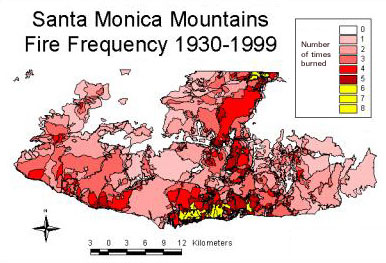Forest Fires

Heavy tailed frequency vs. size statistics describe forest fires across broad biophysical gradients, but what, if anything, do they reveal about the fundamental mechanisms which lead to complexity in terrestrial ecosystems? Earth scientists have focused on temporal variations in fire statistics as a means for probing the impact of human intervention and fire suppression on natural landscapes, and the cycles of perturbation and renewal in disturbance ecology. At the same time, abstract forest fire models have arisen as paradigms for two competing frameworks for complex systems. These are self-organized criticality (SOC), which emphasizes fuel connectivity in random configurations at a critical density, and highly optimized tolerance (HOT), which emphasizes specialized high-density configurations which are tuned for robustness in an uncertain environment. We are using observed statistics and fire scar shapes to (1) draw fundamental distinctions between the SOC and HOT mechanisms for complexity, and (2) evaluate the long term effects of extreme weather and suppression in a high-fidelity, predictive fire regime simulation environment HFire. Observations and our HFire simulations in the Santa Monica Mountains are both in striking agreement with an abstract model based on HOT, which suggests that identifying robustness tradeoffs which underlie resilience in different fire regimes may be key to understanding the long term evolution of forest ecosystems, and evaluating sensitivities to climate change and forest management strategies.
Follow this link for detailed online documentation for HFire.
Follow this link for a discussion of HFire parameterization and validation in the Santa Monica Mountains.
 Ecology and Forest Fires
Ecology and Forest Fires